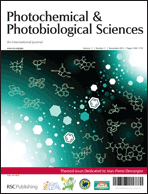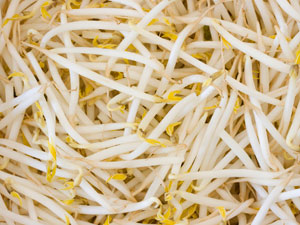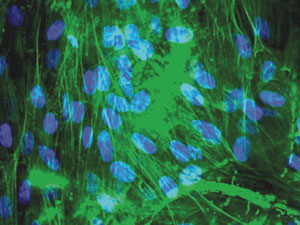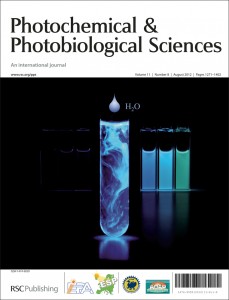This month sees the following articles in PPS that are in the top ten most accessed:-
Heteroaromatic Donors in Donor-Acceptor-Donor Based Fluorophores Facilitate Zinc Ion Sensing and Cell Imaging
Sivaramapanicker Sreejith, Kizhumuri P. Divya, Purushothaman Jayamurthy, Jomon Mathew, V. N. Anupama, Divya Susan Philips, Palappuravan Anees and Ayyappanpillai Ajayaghosh
Photochem. Photobiol. Sci., 2012, Advance Article, DOI: 10.1039/C2PP25110H, Paper
A genetically-encoded photosensitiser demonstrates killing of bacteria by purely endogenous singlet oxygen
Rubén Ruiz-González, John H. White, Montserrat Agut, Santi Nonell and Cristina Flors
Photochem. Photobiol. Sci., 2012,11, 1411-1413, DOI: 10.1039/C2PP25126D, Communication
Photoinduced formation of reversible dye radicals and their impact on super-resolution imaging
Sebastian van de Linde, Ivan Krstić, Thomas Prisner, Sören Doose, Mike Heilemann and Markus Sauer
Photochem. Photobiol. Sci., 2011,10, 499-506, DOI: 10.1039/C0PP00317D, Paper
Fluorescence photoswitching and photoreversible two-way energy transfer in a photochrome-fluorophore dyad
Karima Ouhenia-Ouadahi, Rémi Métivier, Stéphane Maisonneuve, Aurélie Jacquart, Juan Xie, Anne Léaustic, Pei Yu and Keitaro Nakatani
Photochem. Photobiol. Sci., 2012, Advance Article, DOI: 10.1039/C2PP25129A, Paper
Controlled surface trap state photoluminescence from CdS QDs impregnated in poly(methyl methacrylate)
Santanu Karan, Manisree Majumder and Biswanath Mallik
Photochem. Photobiol. Sci., 2012,11, 1220-1232, DOI: 10.1039/C2PP25023C, Paper
Dirty hands: photodynamic killing of human pathogens like EHEC, MRSA and Candida within seconds
Anja Eichner, Fernanda Pereira Gonzales, Ariane Felgenträger, Johannes Regensburger, Thomas Holzmann, Wulf Schneider-Brachert, Wolfgang Bäumler and Tim Maisch
Photochem. Photobiol. Sci., 2012, Advance Article, DOI: 10.1039/C2PP25164G, Paper
Nanoparticles: their potential use in antibacterial photodynamic therapy
Stefano Perni, P. Prokopovich, Jonathan Pratten, Ivan P. Parkin and Michael Wilson
Photochem. Photobiol. Sci., 2011,10, 712-720, DOI: 10.1039/C0PP00360C, Perspective
ß-Cyclodextrin polymer nanoparticles as carriers for doxorubicin and artemisinin: a spectroscopic and photophysical study
Resmi Anand, Francesco Manoli, Ilse Manet, Samia Daoud-Mahammed, Valentina Agostoni, Ruxandra Gref and Sandra Monti
Photochem. Photobiol. Sci., 2012,11, 1285-1292, DOI: 10.1039/C2PP25014D, Paper
Cytochrome c-promoted cardiolipin oxidation generates singlet molecular oxygen
Sayuri Miyamoto, Iseli L. Nantes, Priscila A. Faria, Daniela Cunha, Graziella E. Ronsein, Marisa H. G. Medeiros and Paolo Di Mascio
Photochem. Photobiol. Sci., 2012,11, 1536-1546, DOI: 10.1039/C2PP25119A, Paper
Cyanostilben-based derivatives: mechanical stimuli-responsive luminophors with aggregation-induced emission enhancement
Yujian Zhang, Jingwei Sun, Gaofeng Bian, Yiyi Chen, Mi Ouyang, Bin Hu and Cheng Zhang
Photochem. Photobiol. Sci., 2012,11, 1414-1421, DOI: 10.1039/C2PP05404C, Paper
Why not take a look at the articles today and blog your thoughts and comments below.
Fancy submitting an article to PPS? Then why not submit to us today or alternatively email us with your suggestions.

















